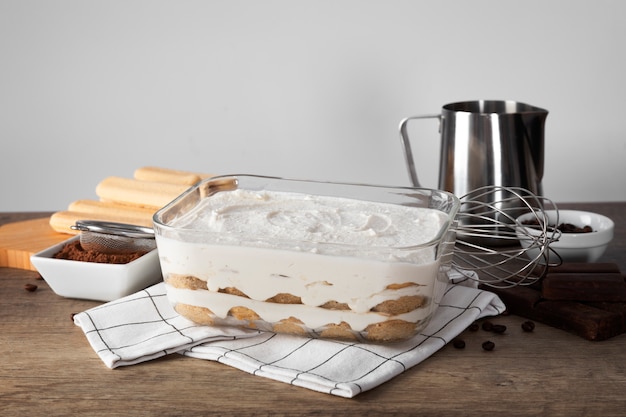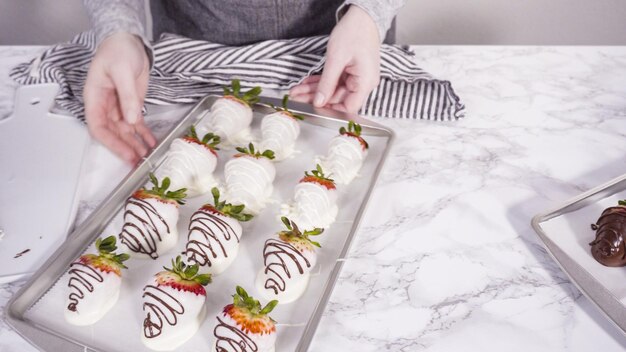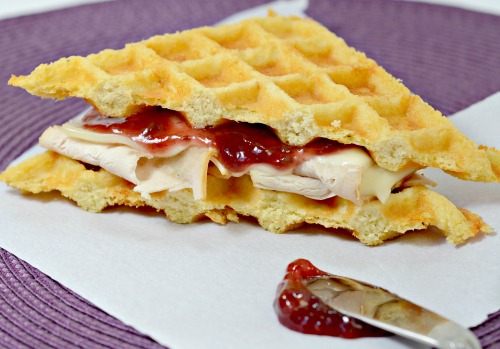Understanding Why Your Prevent Cakes Sinks in the Middle
Every passionate baker has experienced that moment of disappointment when a fresh loaf comes out of the oven with an unfortunate dip at its core. This common predicament can turn a beautifully crafted dessert into a less-than-ideal creation, leaving many scratching their heads in confusion. Fortunately, learning more about the factors that contribute to this phenomenon can illuminate the path to perfecting baking techniques.
Various elements play pivotal roles in shaping the final outcome of baked goods, from ingredient proportions to oven conditions. Grasping these intricacies not only fosters greater confidence in the kitchen but also reveals the art behind achieving delightful, even textures. With a sprinkle of knowledge and a dash of practice, anyone can enhance their culinary skills and ensure that future masterpieces rise to their full potential.
As we delve deeper into this subject, it becomes clear that the journey towards flawless baking is both a science and an artistry. By examining common pitfalls and exploring effective strategies, aspiring bakers can transform their culinary adventures into delectable successes. Join us as we unravel the mysteries behind those pesky depressions and share essential tips for achieving luscious, evenly baked treats.
Common Causes of Cake Batter Sinking
A delightful baked treat can sometimes disappoint when it doesn’t rise properly. Several factors contribute to this issue, affecting the texture and overall quality. Understanding these common reasons can help bakers achieve better results and ensure a perfectly fluffy outcome every time.
Ingredient Imbalances
The proportions of key components like flour, sugar, and baking powder play a crucial role in the final structure. An excess or deficiency in any of these elements can lead to collapse. Using too much liquid can create a heavy batter, while inadequate leavening agents will fail to provide the necessary lift.
Incorrect Baking Temperatures
The temperature of the oven significantly influences the baking process. If the heat is too low, the batter may not cook thoroughly, resulting in a soggy center. Conversely, excessively high temperatures can cause the exterior to firm up too quickly, inhibiting proper rising. It’s essential to preheat the oven and use an accurate thermometer for optimal baking.
| Cause | Description |
|---|---|
| Ingredient Imbalances | Incorrect ratios of essential ingredients can affect lift and texture. |
| Incorrect Baking Temperatures | Improper oven heat can lead to undercooked centers or overly firm exteriors. |
| Overmixing Batter | Excessive mixing can result in too much air being incorporated, causing instability. |
| Opening Oven Door Too Early | Sudden temperature changes can shock the batter and disrupt rising. |
Impact of Oven Temperature on Baking
The influence of heating levels in an oven plays a crucial role in achieving desired outcomes during the baking process. Variations in temperature can lead to significant differences in the structure and texture of baked goods. It is essential to grasp the thermal dynamics at play to ensure optimal results.
High temperatures may cause the exterior of a product to firm up too quickly, while the interior might remain undercooked. Conversely, lower settings can result in an insufficient rise, yielding dense and heavy treats. Therefore, recognizing and maintaining appropriate heat adjustments is vital for successful baking ventures.
Moreover, oven calibration is another important factor; inaccuracies in temperature readings can mislead bakers, producing unexpected results. This highlights the necessity of regular checks and adjustments to guarantee an accurate baking environment.
In conclusion, understanding the role of oven heat can empower bakers to create delightful, well-textured confections. By adopting a careful approach to temperature management, one can enhance the overall baking experience and achieve a more satisfying outcome.
Choosing the Right Ingredients for Cakes
Selecting high-quality elements is crucial for achieving a delightful texture and flavor in baked goods. Each component plays a significant role in contributing to the overall success of the final product. From the base to the toppings, every ingredient can affect the outcome, so making informed choices is essential.
Key Components to Consider
- Flour: The foundation of any baked treat, flour can vary in protein content. All-purpose flour is versatile, while cake flour offers a lighter crumb.
- Sugar: It not only sweetens but also influences moisture and tenderness. Granulated, brown, and powdered sugars each have unique effects on texture and taste.
- Fats: Butter provides flavor and richness, while oils can lead to a moist result. Understanding how different fats behave in recipes can make a difference.
- Leavening Agents: Baking powder and baking soda are essential for creating a light structure. Measuring them accurately is critical for proper rise.
- Eggs: Besides binding ingredients, they contribute to moisture and richness. The size and freshness can influence the final product.
Additional Elements for Flavor and Texture
- Liquid: Milk, water, or additional flavor liquids affect the batter’s consistency. Each option brings distinct flavors.
- Flavorings: Vanilla extract, citrus zest, or spices add depth. Experimenting with different flavor profiles can elevate your creation.
- Extras: Nuts, fruits, or chocolate chips can enhance texture and provide bursts of flavor, but adding them requires careful balance.
By carefully selecting each ingredient, bakers can achieve a delicious, appealing, and satisfying result. Being mindful of how these components interact will aid in crafting perfect treats every time.
Importance of Proper Mixing Techniques
Mastering the art of blending ingredients is crucial for achieving a desirable baked product. What occurs during this phase can greatly influence the final texture and structure. If done incorrectly, it may lead to undesirable outcomes that affect the overall quality, making it essential to grasp the appropriate methods involved in this process.
Achieving Even Consistency
Achieving a uniform mixture is vital for ensuring that all components are well-distributed throughout the batter. This consistency minimizes the likelihood of bubbles or dense spots forming, which can impact the overall rise. Proper blending allows for an even incorporation of air into the mixture, promoting a light and airy outcome.
Timing and Technique
Both the duration and approach applied during mixing are fundamental aspects that can significantly affect results. Over-mixing can lead to a tough texture by developing gluten excessively, while under-mixing can result in lumps and uneven baking. Understanding the balance of these methods enhances both flavor and appearance, leading to a more satisfying final result.
Role of Cake Size and Pan Type
When baking, dimensions of the sweet treat and the type of baking vessel used play a crucial part in the final outcome. The relationship between these elements significantly influences the texture, structure, and overall appearance of the dessert. Each aspect must be considered carefully to achieve a delightful result that meets expectations.
Size can affect the heat distribution and cooking time dramatically. Smaller creations tend to cook more quickly throughout, while larger ones may create challenges in ensuring even baking. A thorough understanding of timing and adjustments based on size is essential to avoid undesired effects.
Additionally, the type of pan impacts the heat conduction and retention properties. Materials such as aluminum, glass, or silicone behave differently under heat, which can lead to varied results. For example, metal pans typically heat up more quickly compared to glass, which retains heat longer. Each option offers unique benefits and challenges, making the choice critical.
In conclusion, both dimensions and pan choices hold significant sway over the success of any baking endeavor. Being mindful of these factors can guide bakers towards achieving a perfectly baked delight.
Tips for Testing Cake Doneness
Determining the right moment to remove a baked treat from the oven is crucial for ensuring a delightful texture and flavor. Several methods can be employed to achieve this, each offering a reliable way to assess whether the dessert is ready to be enjoyed.
Common Methods
There are several techniques that can be utilized to verify the readiness of your baked creation. Some of the most popular include:
| Method | Description |
|---|---|
| Toothpick Test | Insert a toothpick into the center; if it comes out clean or with a few crumbs, it is fully baked. |
| Touch Test | Gently press the top of the dessert; it should spring back if it’s cooked through. |
| Golden Color | A well-baked treat often has a golden brown hue, indicating thorough cooking. |
| Smell | A fragrant aroma wafting from the oven can also signify that baking is almost complete. |
Timing and Temperature
Keep an eye on the clock and follow the suggested baking time in your recipe. Additionally, using an oven thermometer can help ensure that the baking environment remains consistent, allowing for a perfect outcome each time.
Q&A: Cake sink in the middle
What causes cakes to sink in the middle while baking?
Cakes can sink in the middle for several reasons. One common cause is underbaking; if the cake isn’t cooked through, the structure won’t be strong enough to support the weight of the cake once it cools. Another reason could be too much leavening agent (like baking powder or baking soda), leading to a rapid rise and then a collapse. Additionally, opening the oven door too soon can introduce a temperature drop, causing the cake to deflate. Finally, using incorrect oven temperatures can also contribute to this issue.
How can I ensure my cake rises properly without sinking?
To ensure your cake rises properly, start by measuring the ingredients accurately, particularly the flour and leavening agents. Make sure to mix the batter just until the ingredients are combined to avoid incorporating too much air, which can lead to a collapse. It’s also essential to bake at the recommended temperature and avoid frequently opening the oven door during baking. Using a reliable oven thermometer can help you ensure the temperature is consistent.
Are there specific ingredients that can help prevent a cake from sinking?
Yes, certain ingredients and their ratios can impact the stability of your cake. For instance, using the correct amount of flour provides the necessary structure to hold up the cake. You can also consider adding an extra egg, as eggs contribute to the cake’s structure and stability. Additionally, using a combination of cake flour and all-purpose flour can create a good texture while still providing strength. Make sure your ingredients are fresh, especially baking powder, as expired leavening agents can cause baking issues.
Is the size and shape of the baking pan important for preventing cake sinking?
Absolutely! The size and shape of your baking pan can greatly influence how your cake bakes. If the pan is too small for the amount of batter, the cake might rise too quickly and then sink in the middle. Conversely, using a pan that is too large can lead to uneven baking. It’s important to use the pan size recommended in the recipe. For added stability, using a heavier, more robust pan can also help distribute heat more evenly, resulting in better baking.
What should I do if my cake does sink in the middle after baking?
If your cake has sunk in the middle, don’t worry too much—there are ways to salvage it. You can use a serrated knife to level the cake, creating a flat surface for frosting. If the sinkhole is deep, you might consider filling it with whipped cream, fruit, or frosting to disguise the issue. Alternatively, if you’re not worried about aesthetics, you can serve it as a rustic dessert and call it a “cobbler-style” cake! It’s also a good opportunity to troubleshoot the baking process to prevent it from happening again in future attempts.
What size cake pan is best for a classic chocolate cake?
A 9-inch round cake pan is typically best for a classic chocolate cake. This size allows the cake batter to spread evenly, ensuring the cake bakes to the right height.
Why might cake batter stick to the sides of the cake pan?
Cake batter can stick to the sides of the cake pan if the pan isn’t properly greased or floured before pouring in the batter. To prevent this, it’s recommended to grease the pan or line it with parchment paper.
How can you prevent a sunken cake when baking?
A sunken cake can occur if the oven temperature is too low or if you open the oven door too early. To avoid this, make sure the oven is preheated to the correct temperature and avoid opening the door during the first 30 minutes of baking.
What mistakes in a cake recipe can cause uneven rising?
Mistakes in a cake recipe, such as using the wrong amount of leavening agent or not properly mixing the dry ingredients, can cause uneven rising. It’s also important to accurately measure both wet and dry ingredients.
What should you consider when choosing a cake pan for a bundt cake?
When choosing a cake pan for a bundt cake, ensure it’s a true bundt pan with the correct shape and size to hold the cake batter. Bundt pans usually have a decorative design and a central tube, which helps the cake bake evenly.
How does the temperature being too low affect the cake?
If the temperature is too low, the cake may not rise properly, leading to a dense or sunken cake. It’s crucial to bake a cake at the recommended temperature to ensure even rising and proper texture.
What is the importance of properly mixing dry ingredients in a cake recipe?
Properly mixing dry ingredients is essential to evenly distribute leavening agents, such as baking powder or soda, throughout the cake batter. This ensures the cake rises evenly and avoids dense spots.
How can you tell if your cake pan is the right size for your cake recipe?
To ensure your cake pan is the right size, check that the cake batter fills the pan about halfway to two-thirds full. This allows enough room for the cake to rise without overflowing.
Why is it important to preheat the oven before you bake a cake?
Preheating the oven is crucial because it ensures the cake starts baking immediately at the correct temperature. If the oven temperature is too low at the start, it can cause a sunken cake or uneven baking.
What should you do if your cake recipe calls for a bundt pan but you don’t have one?
If a cake recipe calls for a bundt pan but you don’t have one, you can use a similarly sized tube pan or two loaf pans as a substitute. However, keep in mind that the final shape and texture of the cake may vary.




